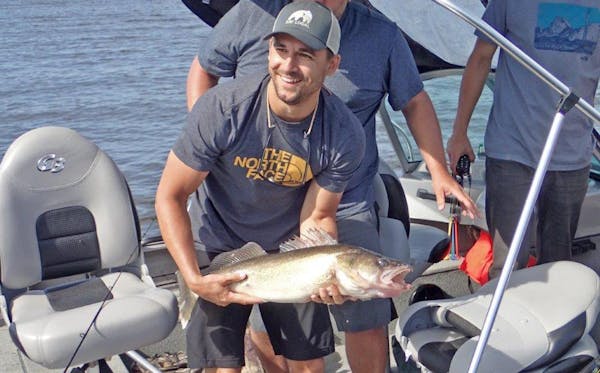Good weather, stream improvements and near-record trout populations in southeastern Minnesota combined to make the summer of 2017 a good fishing season.
Reports from fly fishing guides and fisheries managers for the Department of Natural Resources (DNR) have described ideal temperatures and balanced rainfall as the backdrop for high catch rates and increasingly larger brook trout and brown trout caught in runs around Chatfield, Preston, Spring Valley and Lanesboro.
"Fish populations are among the highest we've ever recorded, and water conditions are almost perfect," said Ron Benjamin, Lanesboro area fisheries supervisor for the DNR.
Barring a rainfall event of 5 inches or more, the buoyant conditions should last until mid-October, Benjamin said.
That's when whitetail deer hunting takes over the stream banks.
But even then, trout stream fishing will remain open year-around in the area's state parks and within the city limits of the region's four main villages.
The increasing angling opportunities are part of a still-unfolding era of trout resource management that's aimed to expand fly fishing on Minnesota's cold water streams.
"They really are expanding the opportunities," said Mel Hayner, owner of the Driftless Fly Fishing Co. in Preston. "It really is changing some of the economy down here."
Hayner has expanded his fly shop in each of the past three years, he said. This year, he guided anglers who visited from 15 other states. The catch rates have been high and anglers are catching bigger fish, he said.
"It's been fantastic," Hayner said. "It's becoming more of a fly fishing destination."
More than 30 stream bank restoration projects in the area have diminished the flow of muddy water after heavy rains, Hayner said. Moreover, water depths were friendly this summer on most weekends, maximizing visitor traffic.
One of the Preston area's biggest improvement projects is near completion along a 3-mile stretch of Camp Creek, Hayner said. State taxpayers, Trout Unlimited and the National Trout Center partnered to upgrade stream habitat for trout and make the creek more accessible to anglers and passers-by.
The project added handicapped access and was designed to include educational material for all visitors to explain the environmental importance of healthy streams and how area residents can improve their local watershed.
Elias Díaz gets key hit as the Rockies rally for a wild 10-9 victory over the Padres

Rare and fatal brain disease in two deer hunters heightens concerns about CWD

